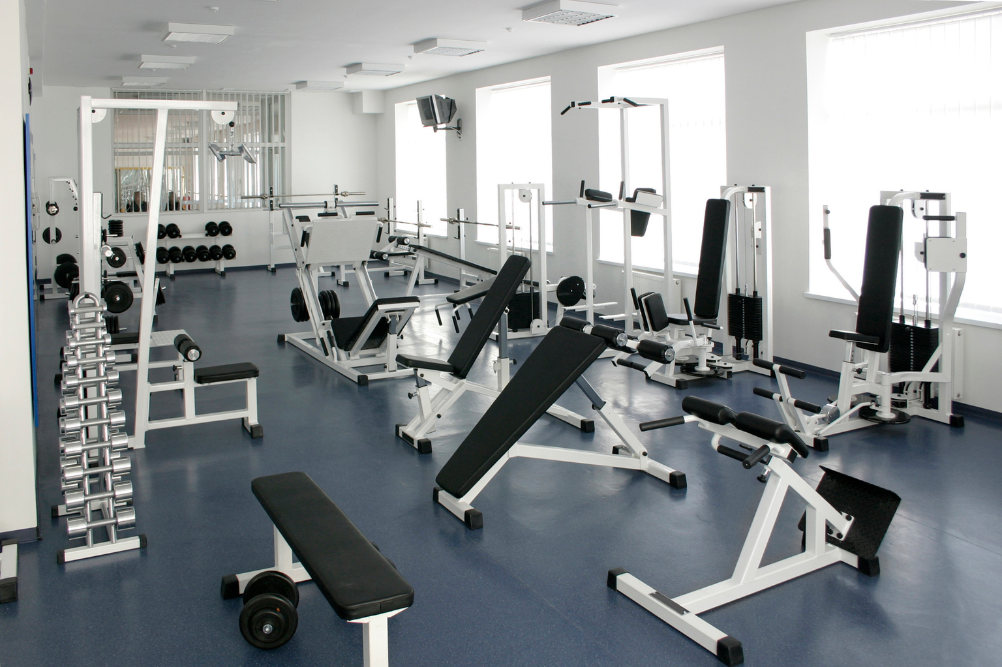Understanding the Exercise Equipment Warnings
What do the warnings mean by “any exercise program”
The term “any exercise program” generally refers to engaging in structured physical activities with the intention of improving fitness and health.
The warning implies that before embarking on a new exercise regimen, it is advisable to undergo a medical examination to assess one’s physical readiness and identify any underlying health conditions that might require special consideration or precautions.
Defining overexercise
Overexercise refers to engaging in physical activity beyond the body’s ability to recover and adapt, leading to negative consequences such as injuries, exhaustion, or impaired immune function.
The warning serves as a reminder to exercise within reasonable limits and avoid pushing oneself excessively, especially without proper conditioning and gradually increasing intensity.
Interpreting pain during exercise
Experiencing pain during exercise can indicate various things, ranging from normal muscle soreness to potential injury or overexertion.
The warning advises individuals to listen to their bodies and stop exercising immediately if they feel faint, dizzy, or experience pain that exceeds mild discomfort.
Consulting a healthcare professional can help evaluate the cause of pain and determine whether it is safe to continue or if modifications to the exercise routine are necessary.

Interpreting pain during exercise
The Importance of Medical Consultation
Do you need to consult a doctor before starting an exercise routine?
In most cases, seeking a doctor’s approval before initiating an exercise program is not mandatory for the general population.
Individuals without pre-existing medical conditions or significant health concerns can typically begin a low-intensity exercise program and gradually increase intensity over time.
However, consulting with a healthcare professional is recommended for those with specific health conditions, such as cardiovascular diseases, respiratory disorders, musculoskeletal issues, or other chronic illnesses.
A medical consultation helps assess individual risks, receive personalized advice, and establish appropriate exercise guidelines based on the person’s health status and goals.
Starting with low-intensity activities
For individuals without specific health concerns, starting with low-intensity activities can be a safe and effective way to begin an exercise routine.
Examples of low-intensity activities include using light weights, walking at a leisurely pace, biking at a slow speed, engaging in stretching and balancing exercises or participating in light housework or yard work.
These activities allow individuals to maintain a conversation while exercising, indicating a moderate intensity level that is generally safe for most people.
Gradually increasing exercise intensity
When starting from a low fitness level, it is important to make gradual increases in workout duration and intensity over time.
For instance, if someone begins by walking for 10 minutes a day, they can gradually add one minute to their walk every week or two.
Once a person is comfortably walking for 20 minutes a day, they can consider increasing the pace or exploring other moderate-intensity exercises.

Balancing Safety and Encouragement
The potential impact of warnings on exercise motivation
While exercise equipment warnings are crucial for user safety, there is a concern that they might create unnecessary worry and discourage people from exercising.
Some individuals may interpret warnings as an indication that exercise is inherently risky, leading them to avoid physical activity altogether.
Fear of injury or health complications may deter individuals from engaging in exercise, even though regular physical activity has numerous health benefits.
It is essential to strike a balance between highlighting potential risks and promoting the importance of exercise for overall well-being.
Educating users about risk management
Instead of solely focusing on the warnings, it is crucial to provide users with comprehensive information on risk management and injury prevention.
Fitness facilities, trainers, and equipment manufacturers can offer guidance on proper techniques, form, and equipment usage to minimize the likelihood of accidents or injuries.
By emphasizing the importance of proper warm-up, cool-down, stretching, and gradual progression, individuals can exercise safely and reduce the chances of overexertion or strain.
Tailoring warnings to specific populations
Exercise equipment warnings should consider the diverse needs and limitations of different user groups.
Age, fitness level, pre-existing medical conditions, and other individual factors should be taken into account when providing warnings and recommendations.
Clear instructions and guidelines specific to various demographics can empower users to make informed decisions about their exercise routines.

Responsibility of Equipment Manufacturers and Fitness Professionals
Enhanced warning clarity and guidance
Equipment manufacturers play a crucial role in ensuring that warnings are clear, concise, and easily understandable.
Instructions should be written in plain language, avoiding technical jargon, and supplemented with diagrams or illustrations when appropriate.
Additionally, equipment manufacturers can provide detailed guidelines on safe usage, maintenance, and any specific precautions that users need to be aware of.
Education and Certification of fitness professionals
Fitness professionals, such as personal trainers and instructors, play a vital role in guiding individuals through exercise routines safely.
They should undergo comprehensive training and obtain appropriate certifications to understand exercise physiology, injury prevention, and individualized programming.
Fitness professionals can help users navigate exercise equipment, provide modifications for different fitness levels or medical conditions, and ensure proper form and technique to reduce the risk of injuries.
Regular equipment maintenance and Inspection
Fitness facilities should prioritize regular equipment maintenance and inspection to ensure the equipment’s safety and functionality.
Routine inspections can help identify potential hazards, faulty components, or signs of wear and tear that may pose risks to users.
Prompt repairs or replacements should be carried out to maintain a safe exercise environment.

Personal Responsibility and Self-Awareness
Listening to your body
While warnings provide general guidelines, individuals should pay attention to their bodies and exercise within their comfort and capability levels.
Being aware of physical sensations, fatigue, and signs of overexertion is crucial during exercise.
If something feels off or if pain persists, it is important to stop exercising and seek appropriate medical advice if necessary.
Seeking professional guidance when needed
If individuals have pre-existing medical conditions, chronic illnesses, or specific concerns, consulting a healthcare professional or exercise specialist is highly recommended.
These professionals can provide personalized recommendations, address any potential risks, and tailor exercise programs to individual needs and goals.
Gradual progression and self-monitoring
Gradually increasing the intensity, duration, or complexity of exercises allows the body to adapt and minimize the risk of injuries.
Self-monitoring is important in recognizing improvements, managing exertion levels, and adjusting routines accordingly.
Health warnings on exercise equipment should not be disregarded, as they serve as important reminders of potential risks and precautions. While some warnings may raise questions and concerns, it is essential to approach them responsibly and seek clarification when needed. It is generally safe for most individuals to start exercising without a doctor’s approval, especially when engaging in low-intensity activities. However, individuals with specific health conditions should consult with a healthcare professional before beginning an exercise program.
The key is to strike a balance between safety and encouragement. While warnings are crucial for user safety, it is important to provide comprehensive information on risk management, injury prevention, and proper exercise techniques. The education and certification of fitness professionals play a vital role in guiding individuals through safe exercise routines. Equipment manufacturers should ensure clear and easily understandable warnings, as well as provide guidelines on usage and maintenance.

Personal responsibility and self-awareness are also essential. Individuals should listen to their bodies, pay attention to warning signs, and stop exercising if they experience severe pain, dizziness, or other concerning symptoms. Seeking professional guidance when needed, gradually progressing exercise routines, and self-monitoring are crucial aspects of ensuring safety during physical activity.
Ultimately, the goal is to create an environment that promotes safe and effective exercise while addressing any concerns or uncertainties individuals may have regarding health warnings. By understanding the intent behind these warnings, seeking appropriate guidance, and practising responsible exercise habits, individuals can enjoy the benefits of physical activity while minimizing the risks associated with exercise equipment usage.
Source: https://www.health.harvard.edu/blog/health-warnings-on-exercise-equipment-should-you-worryhttps://www.health.harvard.edu/blog/health-warnings-on-exercise-equipment-should-you-worry-202306192943







